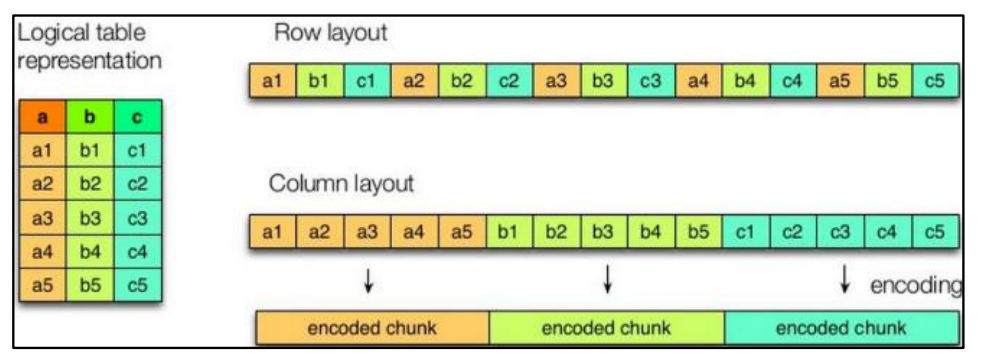1 分区表
分区表实际上就是对应一个 HDFS 文件系统上的独立的文件夹,该文件夹下是该分区所有的数据文件。
Hive 中的分区就是分目录,把一个大的数据集根据业务需要分割成小的数据集。
在查询时通过 WHERE 子句中的表达式选择查询所需要的指定的分区,这样的查询效率会提高很多,所以我们需要把常常用在 WHERE 语句中的字段指定为表的分区字段。
1.1 分区表基本操作
1)引入分区表(需要根据日期对日志进行管理, 通过部门信息模拟)
dept_20200401.log dept_20200402.log dept_20200403.log
2)创建分区表语法
hive (default)> create table dept_partition( deptno int, dname string, loc string ) partitioned by (day string) row format delimited fields terminated by ' ';
注意:分区字段不能是表中已经存在的数据,可以将分区字段看作表的伪列。
3)加载数据到分区表中
(1)数据准备
dept_20200401.log
10 ACCOUNTING 1700 20 RESEARCH 1800
dept_20200402.log
30 SALES 1900 40 OPERATIONS 1700
dept_20200403.log
50 TEST 2000 60 DEV 1900
(2)加载数据
hive (default)> load data local inpath '/opt/module/data/dept_20200401.log' into table dept_partition partition(day='20200401'); hive (default)> load data local inpath '/opt/module/data/dept_20200402.log' into table dept_partition partition(day='20200402'); hive (default)> load data local inpath '/opt/module/data/dept_20200403.log' into table dept_partition partition(day='20200403');
注意:分区表加载数据时,必须指定分区

4)查询分区表中数据
单分区查询
hive (default)> select * from dept_partition where day='20200401';
多分区联合查询
hive (default)> select * from dept_partition where day='20200401' union select * from dept_partition where day='20200402' union select * from dept_partition where day='20200403'; hive (default)> select * from dept_partition where day='20200401' or day='20200402' or day='20200403';
5)增加分区
增加单个分区
hive (default)> alter table dept_partition add partition(day='20200404');
同时增加多个分区
hive (default)> alter table dept_partition add partition(day='20200405') partition(day='20200406');
6)删除分区
删除单个分区
hive (default)> alter table dept_partition drop partition (day='20200406');
同时删除多个分区
hive (default)> alter table dept_partition drop partition (day='20200404'), partition(day='20200405');
7)查看分区表有多少分区
hive> show partitions dept_partition;
8)查看分区表结构
hive> desc formatted dept_partition; # Partition Information # col_name data_type comment month string
思考: 如果一天的日志数据量也很大,如何再将数据拆分?
1.2 二级分区
1)创建二级分区表
hive (default)> create table dept_partition2( deptno int, dname string, loc string) partitioned by (day string, hour string) row format delimited fields terminated by ' ';
2)正常的加载数据
(1)加载数据到二级分区表中
hive (default)> load data local inpath '/opt/module/data/dept_20200401.log' into table dept_partition2 partition(day='20200401', hour='12');
(2)查询分区数据
hive (default)> select * from dept_partition2 where day='20200401' and hour='12';
1.3 动态分区
关系型数据库中,对分区表 Insert 数据时候,数据库自动会根据分区字段的值,将数据
插入到相应的分区中,Hive 中也提供了类似的机制,即动态分区(Dynamic Partition),只不过,
使用 Hive 的动态分区,需要进行相应的配置。
1)开启动态分区参数设置
(1)开启动态分区功能(默认 true,开启)
set hive.exec.dynamic.partition=true;
(2)设置为非严格模式(动态分区的模式,默认 strict,表示必须指定至少一个分区为
静态分区,nonstrict 模式表示允许所有的分区字段都可以使用动态分区。)
set hive.exec.dynamic.partition.mode=nonstrict;
(3)在所有执行 MR 的节点上,最大一共可以创建多少个动态分区。默认 1000
set hive.exec.max.dynamic.partitions=1000;
(4)在每个执行 MR 的节点上,最大可以创建多少个动态分区。
该参数需要根据实际的数据来设定。比如:源数据中包含了一年的数据,即 day 字段有
365 个值,那么该参数就需要设置成大于 365,如果使用默认值 100,则会报错。
set hive.exec.max.dynamic.partitions.pernode=100
(5)整个 MR Job 中,最大可以创建多少个 HDFS 文件。默认 100000
set hive.exec.max.created.files=100000
(6)当有空分区生成时,是否抛出异常。一般不需要设置。默认 false
set hive.error.on.empty.partition=false
2)案例实操
需求:将 dept 表中的数据按照地区(loc 字段),插入到目标表 dept_partition 的相应分
区中。
(1)创建目标分区表
hive (default)> create table dept_partition_dy(id int, name string) partitioned by (loc int) row format delimited fields terminated by ' ';
(2)设置动态分区
hive (default)> set hive.exec.dynamic.partition.mode = nonstrict; hive (default)> insert into table dept_partition_dy partition(loc) select deptno, dname, loc from dept;
(3)查看目标分区表的分区情况
hive (default)> show partitions dept_partition;
2 分桶表
分区提供一个隔离数据和优化查询的便利方式。不过,并非所有的数据集都可形成合理
的分区。对于一张表或者分区,Hive 可以进一步组织成桶,也就是更为细粒度的数据范围
划分。
分桶是将数据集分解成更容易管理的若干部分的另一个技术。分区针对的是数据的存储路径,分桶针对的是数据文件。
2.1 创建分桶表
(1)数据准备
1001 ss1 1002 ss2 1003 ss3 1004 ss4 1005 ss5 1006 ss6 1007 ss7 1008 ss8 1009 ss9 1010 ss10 1011 ss11 1012 ss12 1013 ss13 1014 ss14 1015 ss15 1016 ss16
(2)创建分桶表
create table stu_buck(id int, name string) clustered by(id) into 4 buckets row format delimited fields terminated by ' ';
(3)查看表结构
hive (default)> desc formatted stu_buck; Num Buckets: 4
(4)导入数据到分桶表中,load 的方式
hive (default)> load data inpath '/student.txt' into table stu_buck;
(5)查看创建的分桶表中是否分成 4 个桶

(6)查询分桶的数据
hive(default)> select * from stu_buck;
(7)分桶规则:
根据结果可知:Hive 的分桶采用对分桶字段的值进行哈希,然后除以桶的个数求余的方式决定该条记录存放在哪个桶当中
2)分桶表操作需要注意的事项:
(1)reduce 的个数设置为-1,让 Job 自行决定需要用多少个 reduce 或者将 reduce 的个
数设置为大于等于分桶表的桶数
(2)从 hdfs 中 load 数据到分桶表中,避免本地文件找不到问题
(3)不要使用本地模式
3)insert 方式将数据导入分桶表
hive(default)>insert into table stu_buck select * from student_insert;
2.2 抽样查询
对于非常大的数据集,有时用户需要使用的是一个具有代表性的查询结果而不是全部结
果。Hive 可以通过对表进行抽样来满足这个需求。
语法: TABLESAMPLE(BUCKET x OUT OF y)
查询表 stu_buck 中的数据。
hive (default)> select * from stu_buck tablesample(bucket 1 out of 4 on id);
注意:x 的值必须小于等于 y 的值,否则
FAILED: SemanticException [Error 10061]: Numerator should not be bigger than denominator in sample clause for table stu_buck
3 合适的文件格式
Hive 支持的存储数据的格式主要有:TEXTFILE 、SEQUENCEFILE、ORC、PARQUET。
3.1 列式存储和行式存储

如图所示左边为逻辑表,右边第一个为行式存储,第二个为列式存储。
1)行存储的特点
查询满足条件的一整行数据的时候,列存储则需要去每个聚集的字段找到对应的每个列的值,行存储只需要找到其中一个值,其余的值都在相邻地方,所以此时行存储查询的速度更快。
2)列存储的特点
因为每个字段的数据聚集存储,在查询只需要少数几个字段的时候,能大大减少读取的数据量;每个字段的数据类型一定是相同的,列式存储可以针对性的设计更好的设计压缩算法。
TEXTFILE 和 SEQUENCEFILE 的存储格式都是基于行存储的;
ORC 和 PARQUET 是基于列式存储的。
3.2 TextFile 格式
默认格式,数据不做压缩,磁盘开销大,数据解析开销大。可结合 Gzip、Bzip2 使用,但使用 Gzip 这种方式,hive 不会对数据进行切分,从而无法对数据进行并行操作。
3.3 Orc 格式
Orc (Optimized Row Columnar)是 Hive 0.11 版里引入的新的存储格式。
3.4 Parquet 格式
Parquet 文件是以二进制方式存储的,所以是不可以直接读取的,文件中包括该文件的数据和元数据,因此 Parquet 格式文件是自解析的。
4 合适的压缩格式


On a single core of a Core i7 processor in 64-bit mode, Snappy compresses at about 250 MB/sec or more and decompresses at about 500 MB/sec or more.